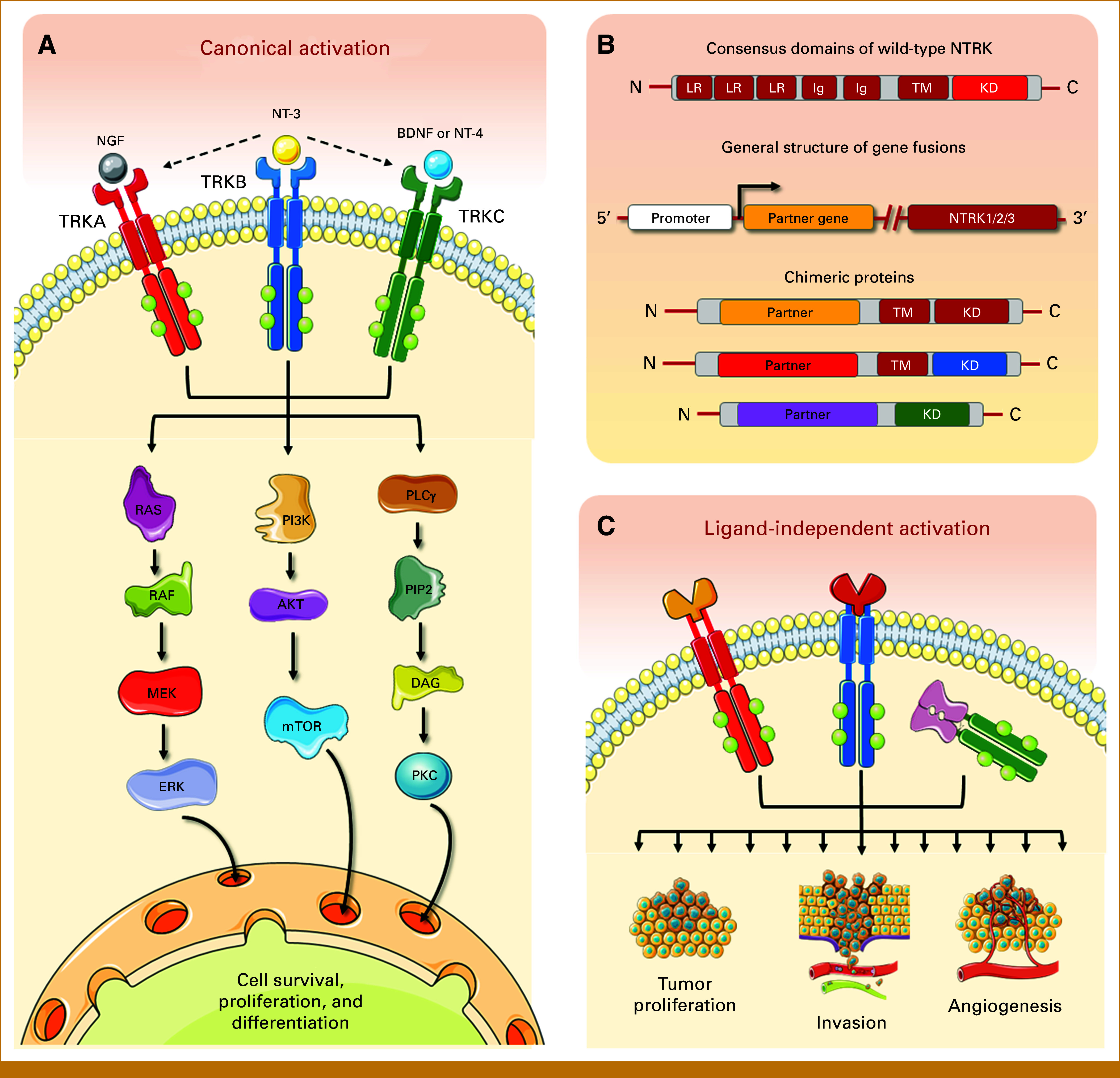FIG 1.

(A) NTRK1, NTRK2, and NTRK3 genes encode tyrosine kinase receptors that under normal conditions respond to the binding of neutrophins (NGF, BDNF, NT-3 or NT-4) and activate key downstream intracellular pathways associated with cell survival, proliferation, and differentiation; (B) the receptors have a consensus structures consisting of an intracellular domain with tyrosine-KD connected through the TM structure to an extracellular domain made of two Ig-like high-affinity receptors and three LR motifs. Gene fusions with a myriad of unrelated partner genes lead to the overexpression of varied chimeric proteins that retain constitutive activation in a ligand-independent manner. In some cases, the TM domain can also be lost, resulting in intracellular kinases (ie, ETV6-NTRK3); (C) dysregulated constitutive activation leads to cell transformation, uncontrolled growth, and tumor progression. The figure was composed with the aid of illustrations from the SMART-servier Medical Art. BDNF, brain-derived neurotrophic factor; Ig, immunoglobulin; KD, kinase domain; LR, leucine-rich; NGF, nerve growth factor; NT-3, neurotrophin-3; NT-4, neurotrophin-4; NTRK, neurotrophic tropomyosin receptor kinase; TM, transmembrane.
